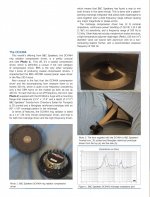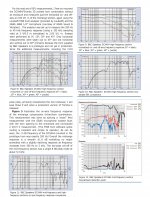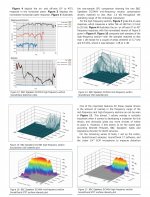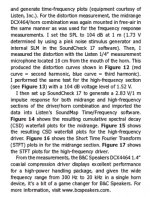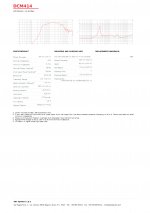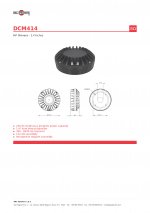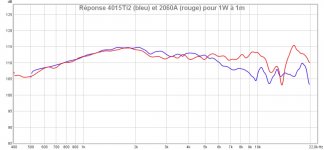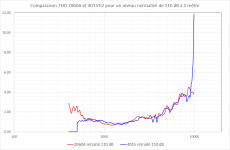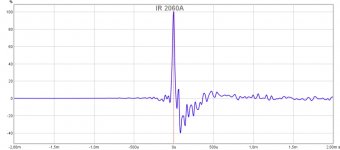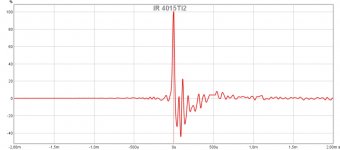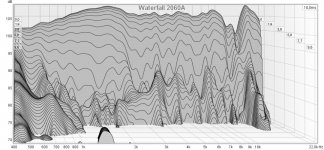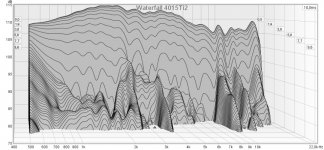No 😉
BMS and B&C are mass produced products, mostly designed to endure the rigours of PA environments, whereas AE is a small company that produces 'specialty' loudspeaker drivers.
Obviously, this doesn't imply (all) BMS and B&C drivers are less suited for domestic use, or that AE drivers are not suited for PA.
Which PA company makes an equivalent to the TD18H+ ?
Faital Pro, with measurements:
18FH500:
https://faitalpro.com/products/files/18FH500/8/18FH500_datasheet_8.pdf
The clear winner!
IMD is a seemingly important factor in concern with perceived eq....if there are ways of minimizing IMD I'd like to know what they are. Not to take away from the importance of THD....it just seems like IMD has more priority in this area of concern.
DCX464:
Attachments
Last edited:
18Sound ND2060A versus 4015Ti2:
Attachments
Start with a small diameter VC.
GM
Why does smaller voice coil reduce IMD?
With Paul Klipsh's modulation distortion equation in mind, surprised no one mentioned going 3 way instead of 2 way.
Minimise HD.if there are ways of minimizing IMD I'd like to know what they are.
With Paul Klipsh's modulation distortion equation in mind, surprised no one mentioned going 3 way instead of 2 way.
Maybe because this thead is about two way speakers.
Maybe because this thead is about two way speakers.
...and the refusal to admit "Is it possible to cover the whole spectrum, high spl, low distortion with a 2-way?" can't be done 😀😀
Lets not get side tracked on the "is it possible" argument, it has already been settled many pages ago. Without specifying what one considers to be "whole spectrum" and "high spl" and even "low distortion" the "cover the whole spectrum, high spl, low distortion with a 2-way" is a vague statement by itself, to say Yes or No means nothing without the variables made to be known. Other wise you are correct in saying that a 2 way nor any speaker made on earth can cover 0 to infinity hertz...ty for your deep insight.
I found one of his studies (https://pdfs.semanticscholar.org/79d0/b397722fb432c888965fd4cc0b18c56a7d5f.pdf), not sure if this is the one you are referring to but thanks for bring it up, the conclusion is noteworthy.
In a nutshell its saying large diameter drivers, and Horns are the enemy of IMD
I'd love to hear the details on this aspect, GMStart with a small diameter VC.
So far we have an 18" and 15" below....something in a horn.... off to a good start there.Reduce the diaphragm's motion
A 2 way with a sub probably supports the same ideology...off to a good start there as well.With Paul Klipsh's modulation distortion equation in mind, surprised no one mentioned going 3 way instead of 2 way.
I found one of his studies (https://pdfs.semanticscholar.org/79d0/b397722fb432c888965fd4cc0b18c56a7d5f.pdf), not sure if this is the one you are referring to but thanks for bring it up, the conclusion is noteworthy.
CONCLUSION
The fact of the case is that distortion is closely proportional to power output. Also the distortion is closely
proportional to diaphragm excursion. The 30-cm directradiator cone had to move about 1/3 as far as the 20-cm
direct-radiator cone for the same output, and the distortion was close to 10 dB lower. The horn diaphragm motion was too small to be measured but could he estimated
to he about 1/ that of the 30-cm cone, so the 17-dB
difference in distortion is the right order of magnitude.
In a nutshell its saying large diameter drivers, and Horns are the enemy of IMD
Last edited:
Lets not get side tracked on the "is it possible" argument,
Pls know comment was meant tongue-in-cheek......pure fun poking among friends 🙂
Possible? Or not? ......Totally a personal call 😉
The article just showed that quality associated with with Horns, known as "dynamic contrast", said to be an unmeasurable spec...is actually technically known as amplitude modulation distortion, which horns tend to lack, and like I assumed to be true contrarily, is absolutely measurable.
The more we know....
Mark100, yes its fine, I know you've been here for a while on this thread, but just incase some of the late comers take that comment and run for another 2 pages.... had to be said lol! "deep insight" total tongue-in-cheek as well =)
The more we know....
Mark100, yes its fine, I know you've been here for a while on this thread, but just incase some of the late comers take that comment and run for another 2 pages.... had to be said lol! "deep insight" total tongue-in-cheek as well =)
Last edited:
Mark100, yes its fine, I know you've been here for a while on this thread, but just incase some of the late comers take that comment and run for another 2 pages.... had to be said lol!
Aah yes, I see your need to contain 🙂... another 2 page run is certainly a possibility (if not a probability haha) .....mea culpa
The article just showed that quality associated with with Horns, known as "dynamic contrast", said to be an unmeasurable spec...is actually technically known as amplitude modulation distortion, which horns tend to lack, and like I assumed to be true contrarily, is absolutely measurable.
The more we know....
Sorry, but this is not correct. There is no data to support that the issue is "actually technically known as amplitude modulation distortion", in fact I doubt that this is a factor at all. What is known is that linear phenomena such as diffraction becomes more audible at higher SPLs which can also be heard as "dynamic contrast" and which, based on my research, is more likely to be the issue.
PS - 50 year old papers should be taken with a grain of salt as we have come so much further since.
Last edited:
Why does smaller voice coil reduce IMD?
With Paul Klipsh's modulation distortion equation in mind, surprised no one mentioned going 3 way instead of 2 way.
The smaller the VC diameter, the higher in frequency the driver can be made pistonic or broken down into a multi-way with decoupling rings, so less TL, breakup modes to inter/commingle.
GM
The smaller the VC diameter, the higher in frequency the driver can be made pistonic or broken down into a multi-way with decoupling rings, so less TL, breakup modes to inter/commingle.
GM
I have to say that I don't follow this argument at all. Breakup modes are linear and do not cause nonlinear modulation.
I also think that a larger VC would allow for more pistonic motion. Driving a circular plate at a point in the center will have more LF modes than one where the drive is on a modal circle. There are patents on this concept.
- Home
- Loudspeakers
- Multi-Way
- Is it possible to cover the whole spectrum, high SPL, low distortion with a 2-way?
